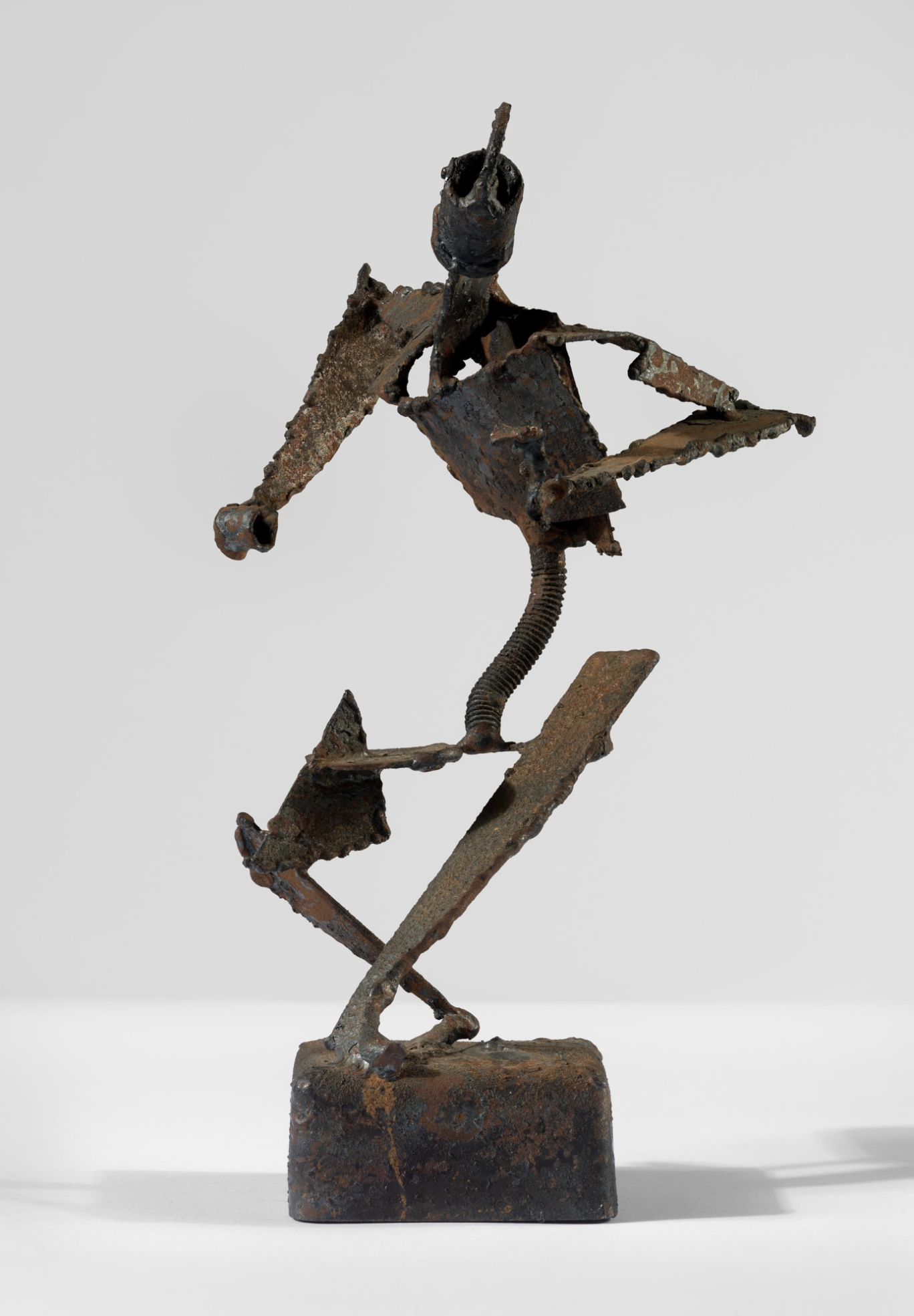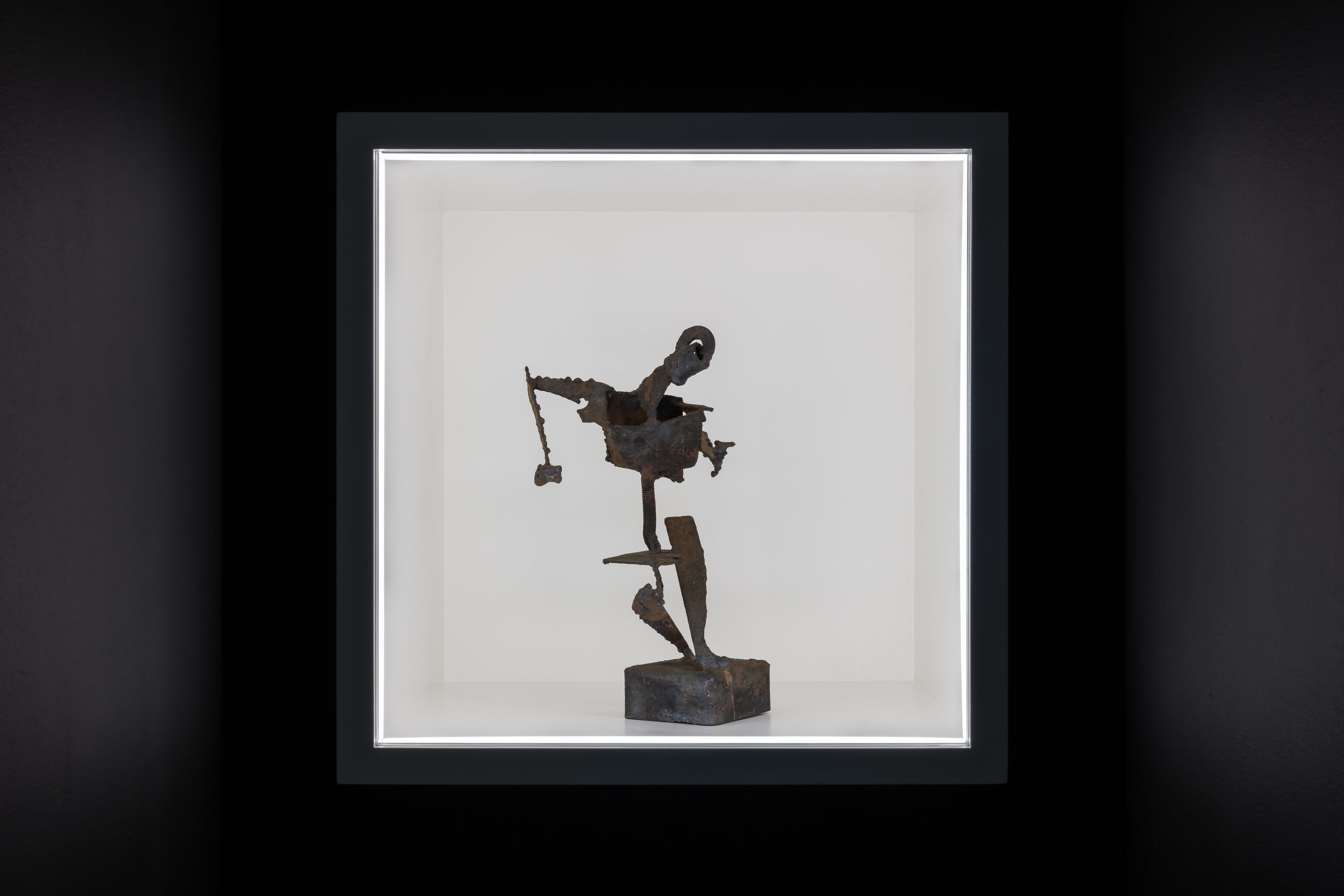Presenting in the Pippy Houldsworth Gallery, a sculpture by late American artist Richard Stankiewicz (1922-2018) in its micro project space, The Box. Constructed in Stankiewicz’s characteristic rusted metal, Man of Parts (c. 1950-59) can be seen as a figural exploration of modernity, in which both materials and people are sacrificed in favour of technological and social ‘progress’.
Unable to afford the fees, Richard Stankiewicz forwent a scholarship to the Cranbrook Academy of Art, Michigan, instead enlisting in the Navy when the United States entered World War II in 1941. Stationed in the Aleutian Islands and Hawaii over the course of the war, Stankiewicz spent his free hours fashioning animal bones and other found materials into his first sculptures. Like Jacob Epstein, who famously altered his Rock Drill (c. 1913–1916) in the shadow of the First World War’s mechanised brutality, Stankiewicz’s experiences during the Second World War appear to have marked him with an ambivalent attitude toward technological innovation and its relationship with human life. The title of the piece presented in The Box, Man of Parts, plays on the bricolage construction of the sculpture and the idiom ‘a man of many parts’ (a multitalented man). A figure formed from discarded scraps of metal, the sculpture hints at the fragmentation of the modern psyche and, perhaps, the trauma of war, which so often returned men home in pieces, literal and psychological.
After being discharged in 1947, the artist travelled to New York City to study at Hans Hofmann's School of Fine Art, only a few years before Judith Godwin, whose work is currently showing in the gallery’s main space. Stankiewicz later made his way to Europe, where he studied sculpture under Ossip Zadkine and painting at Fernand Léger’s Paris atelier. In 1952, after returning to New York, Stankiewicz co-founded the Hansa Gallery with Allan Krapow and other fellow students of Hans Hofmann, including Jan Müller, Jean Follet, and Wolf Kahn. New York’s second artist-run cooperative, the Hansa Gallery regularly presented Stankiewicz’s work until its closure in 1959, and its archives are now in the collection of the Museum of Modern Art, New York. It was in this period that he began working with welded scrap metal, giving new life to the detritus that littered New York’s streets. In these works, Stankiewicz appears to be working through ways that society and the individual might rebuild themselves from the wreckage of industrialisation and successive World Wars.
Throughout the decade during which Man of Parts was made, Stankiewicz’s practice was increasingly celebrated, and he participated in numerous solo and group exhibitions, including Young America 1957at the Whitney Museum of American Art, Irons in the Fire at the Contemporary Arts Museum in Houston (1957), a solo exhibition at the iconic Stable Gallery (1959), and in the 29th Venice Biennale (1958).





